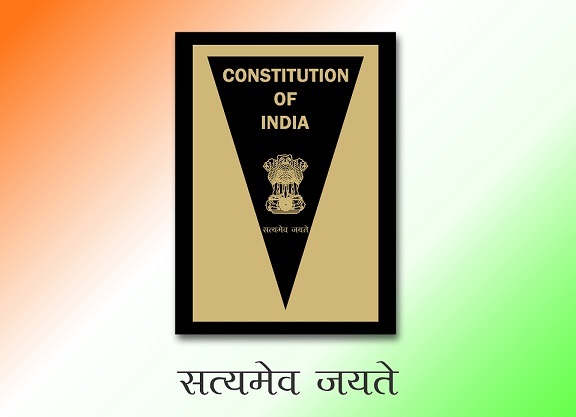
 Data Structure
Data Structure Networking
Networking RDBMS
RDBMS Operating System
Operating System Java
Java MS Excel
MS Excel iOS
iOS HTML
HTML CSS
CSS Android
Android Python
Python C Programming
C Programming C++
C++ C#
C# MongoDB
MongoDB MySQL
MySQL Javascript
Javascript PHP
PHP
- Selected Reading
- UPSC IAS Exams Notes
- Developer's Best Practices
- Questions and Answers
- Effective Resume Writing
- HR Interview Questions
- Computer Glossary
- Who is Who
Amendability of The Preamble: Understanding The Foundation of India\'s Constitution
Introduction
The Preamble is a statement that introduces the constitution and outlines its goals. As a result, the fundamental philosophy outlined in the Indian Constitution's body is spelled out in the preamble.
The Preamble provides two explanations of the objectives of the Constitution: first, with regard to the governance system, and second, with regard to the ideals to be attained in an independent India.

In this article we will tell you about Amendability of the Preamble: Understanding The Foundation of India's Constitution. Preamble, as a whole, is frequently referred to as the soul and spirit of a constitution because it encapsulates the foundation and principles of the document.
Can We Consider Preamble as A Part of the Constitution?
Preambles are common in all world constitutions. The format, content, and length of the Preamble differ from one Constitution to the next.
Despite these variations, the Preamble typically lists the ideals and goals that the constitution's creators intended for it to achieve. It is also regarded as "a key to open the mind of the Constitution's framers" and may reveal the broad objectives for which they included various provisions in the document.
As a result, the preamble is a valid aid in interpreting the Constitution's provisions. The preamble given in the constitution is equal to the preamble of an act and this is explained in detail in the next section.
Amendment to the Preamble
The Preamble of the constitution has only ever undergone one modification thus far.
By virtue of the 42nd Constitutional Amendment Act, this change was made in 1976.
Following this change, the Preamble now contains the words socialist, secular, and integrity.
Indira Gandhi established a committee to propose constitutional amendments during the 1976 Emergency.
The 42nd Amendment to the Indian Constitution was put forth by Sardar Swaran Singh's committee.
The Supreme Court was questioned whether or not the preamble to the Indian constitution can be amended in the famous case of Kesavananda Bharati v. Kerala State.
Mr. Chandrachud J held that as preamble is a part of the constitution and falls under the purview of the assembly thus it cannot be held that it is not a provision of the constitution. The voting shows that the Preamble was submitted for a vote and approved to become a part of the Constitution.
The 42nd Amendment Act, 1976, amended the Indian Constitution's preamble by adding the words socialist, secular, and integrity in order to guarantee economic justice and the abolition of income and standard of living inequality.
There is no official state religion recognised by secularism, which implies respect for all major world religions and tolerance of others. One of the main goals and objectives of the preamble, the fraternity and unity of the state, is ensured by the word integrity.
The Indian Constitution's Preamble is regarded as its heart and soul. Thus the basic structure of our preamble cannot be changed, but it can still be amended in accordance with the provisions of the constitution.
Enforceability of the Preamble in the Court of law
Although it is a part of our Constitution, the Preamble cannot be enforced by a court. The Preamble cannot be justified. This means that courts cannot compel the Indian government to carry out the Preamble's principles. To explain and clarify other constitutional provisions, the courts may refer to the Preamble.
Procedure Related to Amendability of the Preamble
The Constitution can only be changed by introducing a Bill in each House of Parliament. The bill is then supposed to be approved by both houses and must get one third of the majority in these houses.
That is what is meant by a "special majority." There is no provision for a joint sitting in the event that the two Houses disagree. The Bill is then sent to the President, who must sign it into law if it has received the necessary number of votes.
The legislatures of at least half the states must agree to any amendment that seeks to change any of the rules outlined in Article 368. Ratification is not time-limited, but it must be completed before the President is given the amended Bill for his signature.
FAQs
Q1. How can the preamble be amended?
Ans: The preamble can be amended as it is a part of the constitution and therefore the amendments can be made according to the provisions given in the constitution, still the fundamental structure of the preamble cannot be changed.
Q2. Can Preamble be amended cases?
Ans: The Court decided that an amendment made in accordance with Article 368 cannot alter the essential features of the Constitution as stated in the Preamble.
Q3. When can the Preamble be amended?
Ans: Although it may be modified in accordance with the provisions of the constitution, its fundamental makeup cannot be changed. The Preamble of the constitution has only received one amendment so far. The 42nd Constitutional Amendment Act, passed in 1976, made this amendment.
Q4. Who has the power to amend Preamble?
Ans: The 42nd Amendment altered nearly every section of the Constitution, as well as the Preamble and amending clause, and added a few new articles and sections. These changes include some of those listed below. Without judicial review, the Parliament was given unrestricted authority to change any provisions of the Constitution.

